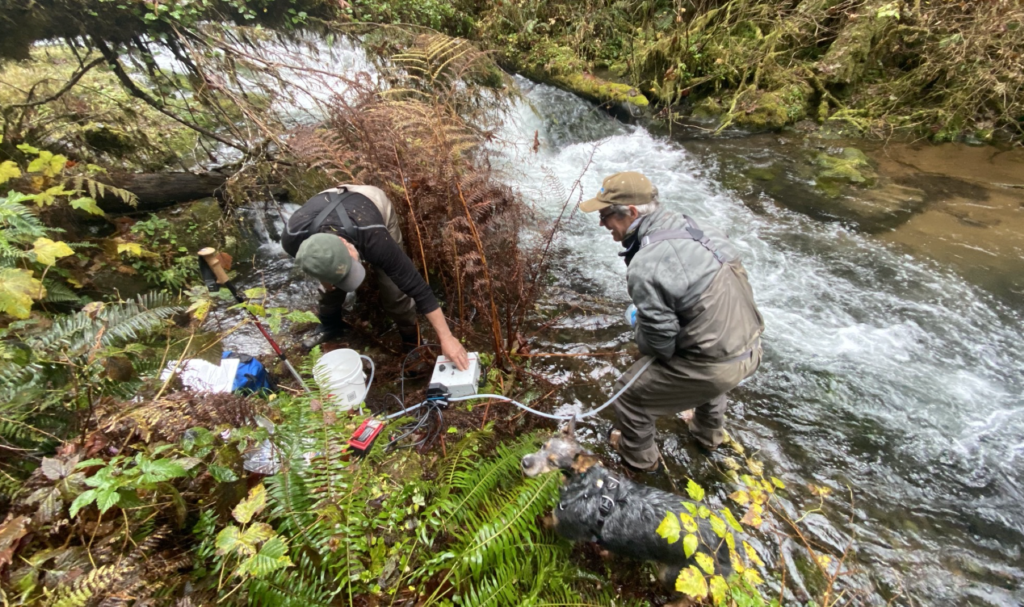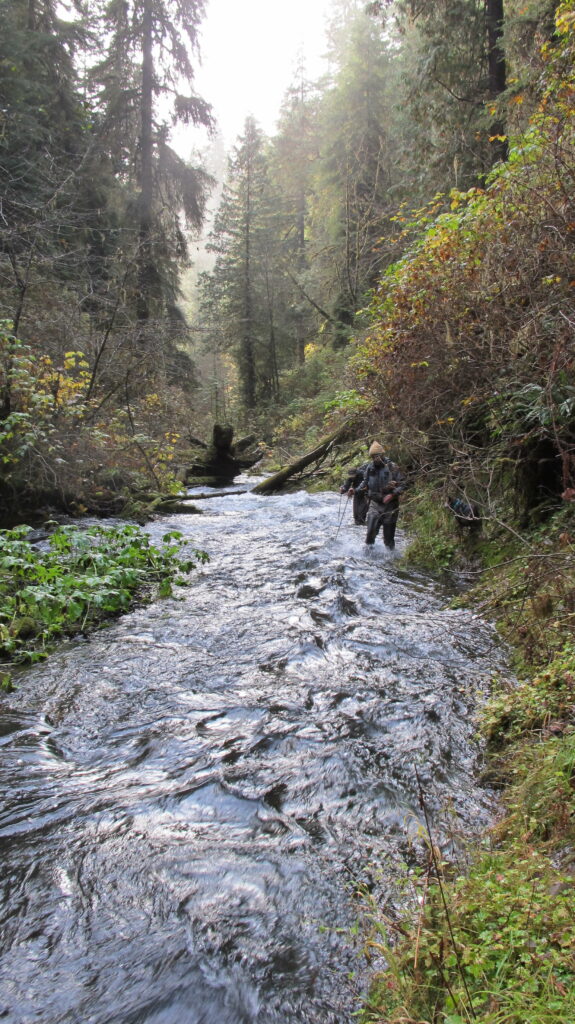
By Sarah Olsen
Fish runs in the Pacific Northwest play an important role in the region’s history, economy, and ecosystems. Anadromous salmon leave their saltwater homes to “run up” freshwater rivers on their way to spawn. Last summer, a new culvert was built over coastal Oregon’s North Creek, allowing anadromous salmon and other fish to swim upriver for the first time in 62 years. The culvert has opened miles of new habitat for aquatic organisms, including the threatened Oregon Coast Coho Salmon. This research project involves monitoring a much smaller aquatic organism tagging along with the fish: microbes.
Before the culvert’s construction, Dr. Rick Colwell collected samples of the river water to use for examining the microbes of North Creek. These diverse microorganisms compose the river’s microbiome, or microbial ecosystem. Dr. Colwell and I are interested in how the microbiome of North Creek will change now that anadromous fish and other aquatic organisms can access it. During the summer, Dr. Colwell and I will return to North Creek to collect samples at the culvert now that the fish run is open. One question we are considering is how the microbes responsible for the biogeochemical cycling in a stream respond to a restored to a restored ecosystem.
Microbial communities provide insight into the health of a river. We will examine the genetic information of microorganisms to build a picture of North Creek’s diversity. Other measurements include the chemical and physical conditions of specific locations along the river, where we can ascertain how the microorganisms play a role in these conditions. We will use computation and prescriptive modeling to better understand the river’s ecosystem and health. We are also interested in how the humans responsible for long-term stewardship of these rivers, including both government entities and indigenous communities, respond to the restored river ecosystem. The construction of the culvert severely impacted access to Drift Creek Camp during their peak season, costing the camp approximately $100,000 in lost income. We want to understand how human communities will continue be impacted by the restoration, as well as the fish and microorganisms.

